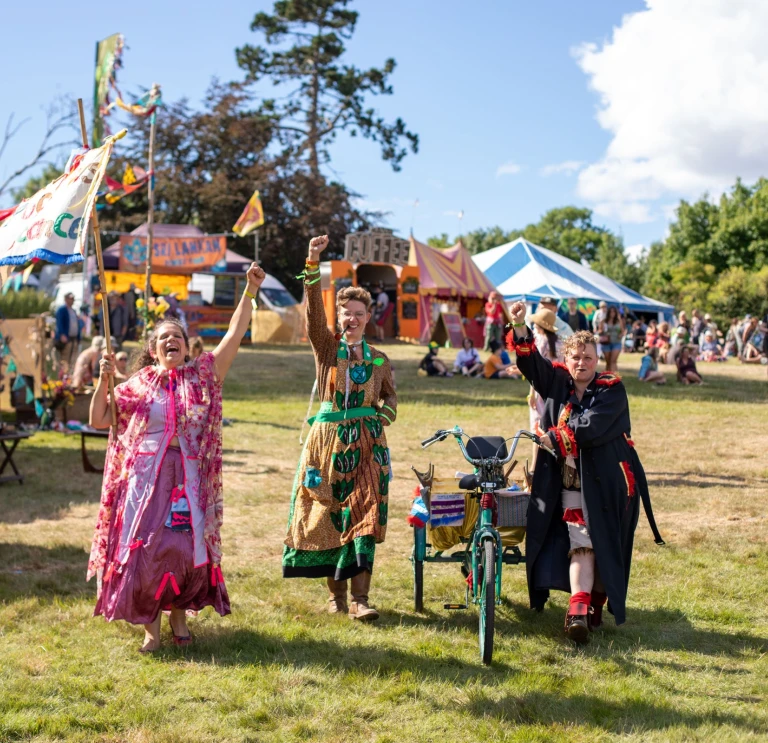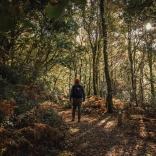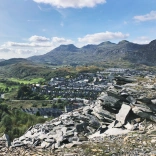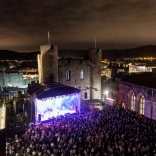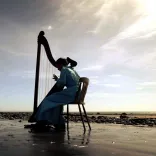“You’ll know you’re close when you hear the guitars,” says a smiling steward in a fluorescent vest, reclining on a plastic chair beneath the sun.
A few steps further up the worn, grassy path and the scene reveals itself. The peaks of striped marquees poke like ancient stone pyramids from a flamboyant forest of waving flags and stilted performers. Beneath them is an undergrowth of ecstatic revellers, with flowers emblazoned on their clothes and wrapped in their hair. As promised, the strum of guitars wafts through the air, muddling with the rhythmic scrape of metal on wood and excited chatter of societal and political change.
This is the Green Gathering, the original off-grid festival, which, during a forty year history, has grown from a small meeting of minds into a one-of-a-kind celebration that's found its home in Wales. The Chepstow-based event packages music, debate, crafting workshops and general good vibes into a weekend-long extravaganza, while keeping a sharp focus on being as sustainable as physically possible.
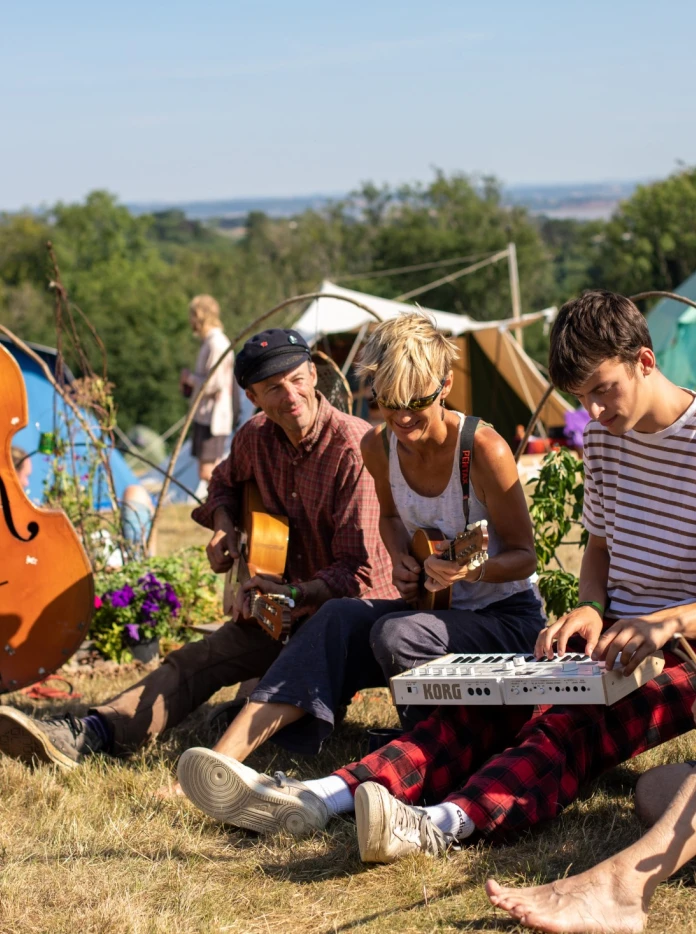
The first meetings
The Green Gathering has always been at the heart of the UK’s environmental movement. Born in the fabled fields of Worthy Farm, the legendary site of Glastonbury Festival, in the early 80s, the original gatherings were little more than informal meetings of green-minded individuals (including founders of the UK's political Green Party), keen to push an – at that time, radical – agenda that prioritised the planet over profit. These intimate events continued over the next decade, culminating in the first official Big Green Gathering near Swindon, England, in 1994, which managed to attract over 2000 revellers.
Green Gathering is as much a participation and workshop festival as it is a music event, with an aim to create habits and ideas that stick with visitors long after the event has ended.
From those small beginnings, Green Gathering has prevailed, hopping around different locations in southern England before settling into its current, long-term home of Piercefield Park in Chepstow in 2011. Steve Muggeridge, one of the festival’s Directors, believes the festival has managed to retain the spirit of those early events, continuing to provide a platform to showcase the benefits of a low-impact lifestyle, while pioneering renewable energy technologies – some of which have proven more successful than others.
'I remember in 2003, the festival was held on the Mendip Hills near Cheddar Gorge,' Steve recalls. 'The transport to the festival site was via an old London double-decker running on an early biodiesel of collected chip-fat oil.
'It was great fun for all abroad, but the bus toiled on the steep inclines, filling the Gorge with a distinct odour of fish and chips.'
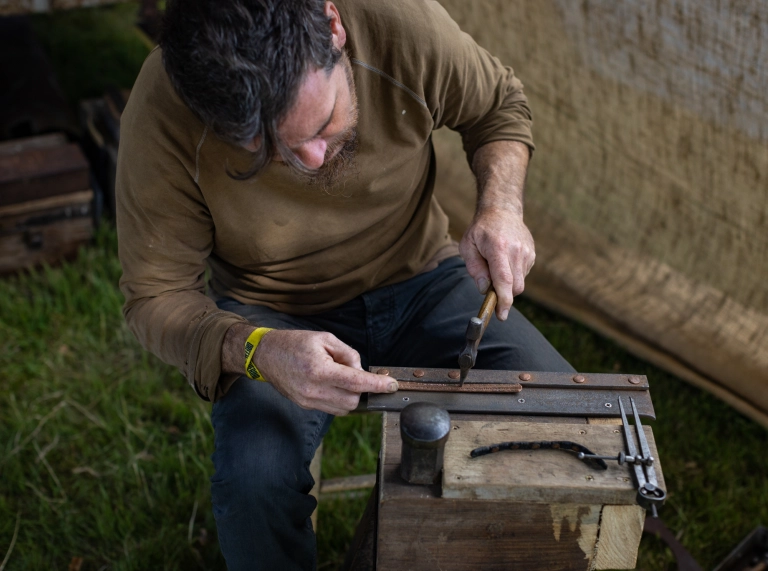
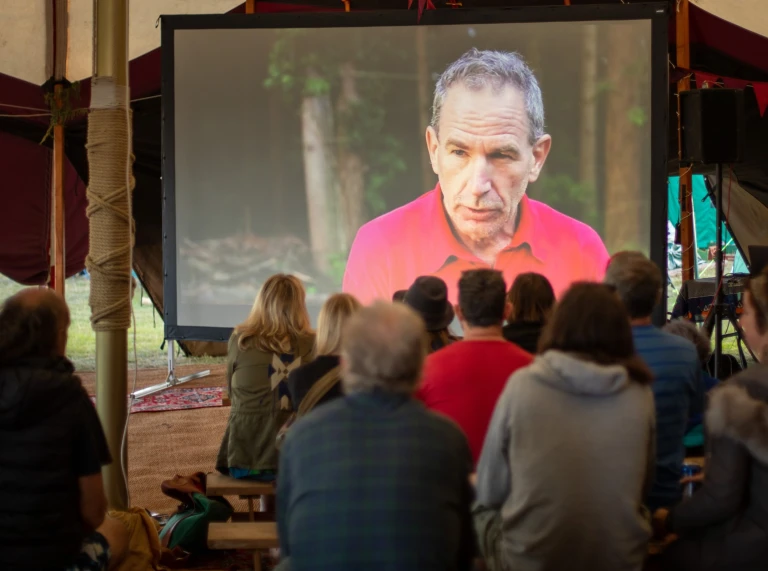
Leading the way on sustainability
Fortunately, most of the festival’s green experiments have borne fruit – as opposed to conjuring unwanted fragrances – and today the event is heralded as one of Europe’s most environmentally friendly festivals, running entirely on renewable energy from the sun and the wind (which powers everything from the lights on the music stages to the battery for the team radios). As a result, the festival was awarded the International Greener Festival Award for Power in 2018 and 2019, as well as garnering an ‘Outstanding’ rating from A Greener Festival, a non-profit organisation dedicated to improving sustainability of events, in 2017, 2018 and 2019 (it also won the coveted International Greener Festival Award at the 2023 International AGF Awards, a huge testament to the festival's ethos and mission).
But the festival's green credentials stretch far beyond its electricity generation, with organisers aiming to make the event itself a showcase of what can be achieved when working with renewable energy and low impact alternatives.
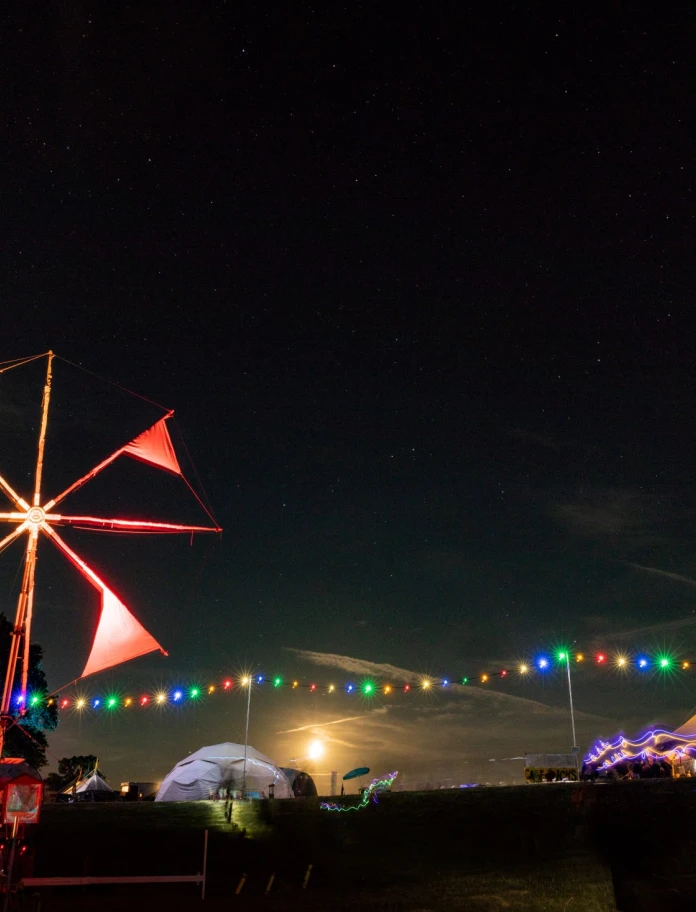
As such, initiatives on-site at the festival include a plate and cutlery rental service for guests (reducing single-use plastic), strict rules around the use of local, sustainably-sourced products that are meat free and able to be composted on-site, perks for festival goers who walk, cycle or take public transport to the festival, and even the creation of a tree-planting scheme that ultimately aims to move the festival from ‘sustainable’ to ‘regenerative’. Working in conjunction with numerous others, these ideas have aided the festival in reducing its on-site carbon emissions to almost zero.
And yet, the festival is constantly aiming to improve, as Em Weirdigan, another of the festival’s directors, explains.
'We like to pay attention to the less obvious ways to make our festival-goers experience more comfortable while also improving the sustainability of the event,” says Em, “A new initiative for 2022 is just such a double-win: we invented ‘moon loos’, screened off toilets with private facilities for washing reusable sanitary pads and moon cups, to enable people having periods to avoid all the plastic in disposable sanitary wear, even at a festival.'
What to expect
This avant-garde approach to festival management extends to the content of the festival itself, with three intimate stages (more fittingly described as grand gazebos) playing host to an incredibly eclectic line-up of musical artists, ranging from acoustic folk three pieces to psychedelic acid rock bands, with the occasional traditional Irish céilí (folk dance) thrown in for good measure.
But the music is just one part of what Green Gathering is all about. Granted equal space on the festival site is the crafting area, where people whittle longbows and learn traditional blacksmithing techniques, and the discussion and debate tents, where topics from flood resilience to the necessities of stopping oil are thoroughly chewed over.
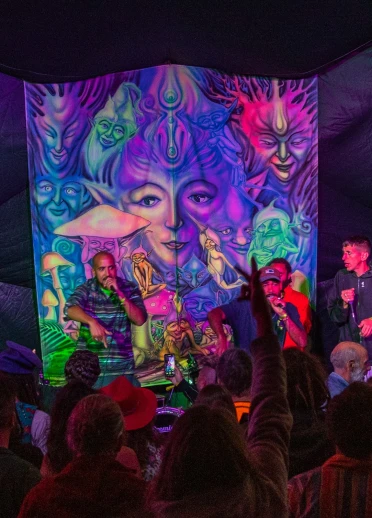
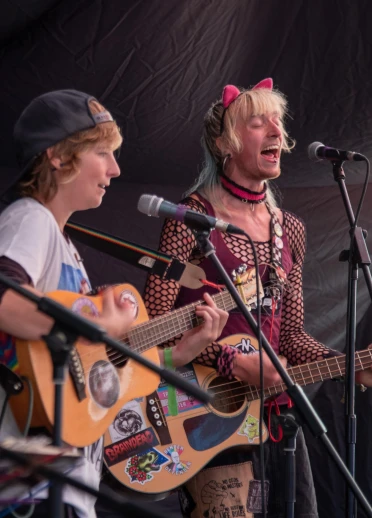
Visitors will also find tents and stalls dedicated to permaculture and gardening, massage and healing and Brazilian dance and communal drumming. Not to mention activities like live theatre, laughter yoga sessions and ukulele jams, with an assortment of activities specifically aimed at kids and teens.
As Steve Muggeridge puts it, the annual weekend is as much a 'participation and workshop festival as it is a music event', with an aim to create habits and ideas that stick with visitors long after the site has been – meticulously – packed away.
'The intention is, and has always been, that the experience will impact people longer than a weekend,' says Steve. 'Regular feedback has shown it has amended the lifestyles of many people over the years.'
To see the colourful jungle of tents and stalls for yourself, grab get your ticket for this year's Green Gathering now, and head down to Piercefield Park in early August. You’ll know you’re close when you hear the guitars.
More information:

